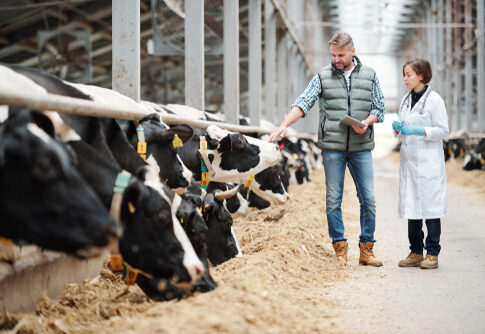Some people are wondering if this is the next COVID. California Governor Gavin Newsom has declared a state of emergency in response to the outbreak of bird flu. California’s dairy industry is facing a massive impact, analogous to covid for cows. The virus has spread to 650 dairies in California.
Outbreak and Government Response
The discovery of the H5N1 bird flu virus in California cattle has sparked widespread concern. Governor Gavin Newsom declared a state of emergency to help contain the outbreak. This declaration is critical because it provides flexibility in resource allocation for the state’s response strategy, which is deemed necessary given the virus’s rapid spread. Despite the low risks to the public, Newsom’s administration emphasizes the importance of public health measures and is willing to take the necessary steps to prevent escalation.
As the bird flu, scientifically known as H5N1, spreads across California’s vast dairy farms, officials are mobilizing resources at an unprecedented pace. The virus’s spread from poultry to dairy cattle signals escalating threats, which are now being closely monitored by health officials. The California Department of Food and Agriculture has confirmed 266 cases recently, while ongoing research and policy revisions aim to control the contagion. The nationwide outbreak that began in 2022 continues to challenge American agriculture’s resilience.
Gov. Gavin Newsom declared a state of emergency Wednesday to boost California’s response to the avian flu, which has infected more than 600 dairy herds and 34 people in the state amid a national outbreak that began in the spring. https://t.co/hiWGFQxLCs
— San Francisco Chronicle (@sfchronicle) December 19, 2024
Impact on California’s Dairy Industry
The bird flu’s intrusion into California’s dairy industry has left many farmers grappling with a crisis akin to “Covid for cows.” Over 645 dairies report positive cases, disrupting farm operations and risking the livelihoods of thousands of workers. Despite implementing strict precautions, ranchers find containment efforts thwarted by the virus’s contagiousness. Meanwhile, scientists are urgently investigating methods to halt its spread to safeguard America’s leading milk-producing state from further devastation.
“We’re trying to do everything we possibly can, and this has just been the worst crisis we’ve ever dealt with in the dairy industry in California.” – Anja Raudabaugh
While 56 dairies have now recovered and emerged from quarantine, vigilance remains high with weekly tests as a cornerstone of California’s recovery plan. To date, 34 individuals have been infected, primarily dairy workers, but Governor Newsom assures residents that the threat to the general population remains minimal. Ongoing public education and PPE usage for those handling potentially infected animals support efforts to curb further threats.
This is what Gov. Newsom said as he was declaring a State of Emergency in California. So given "Get the Facts" the question is whether this SOE is warranted? I'm not answering. Just posing the question. https://t.co/8AMa2bONzk
— Bruce Weingart (@bruce_weingart) December 19, 2024
Political Considerations and Critique
Governor Newsom’s emergency declaration has also sparked critical discussions among political commentators like Glenn Beck and Liz Wheeler. Beck critiques Newsom, suggesting parallels with other leaders known for strict policies, implying potential overreach. The government’s approach to emergency powers draws scrutiny regarding their implications, with some fearing a reversion to stringent health policies reminiscent of the COVID-19 era.
“Bill Gates warned us, and he strangely knows when these things are happening.” – Glenn Beck
Despite such discourse, the administration emphasizes preventive measures rooted in California’s robust testing and monitoring systems, which are essential to managing such health challenges going forward. Authorities continue to face enormous pressure as they juggle safeguarding public health with protecting economic interests within California’s vital dairy sector.
Sources:
- H5N1 Bird Flu Virus in Livestock
- Avian Flu Has Hit Dairies So Hard That They’re Calling It ‘Covid for Cows’

